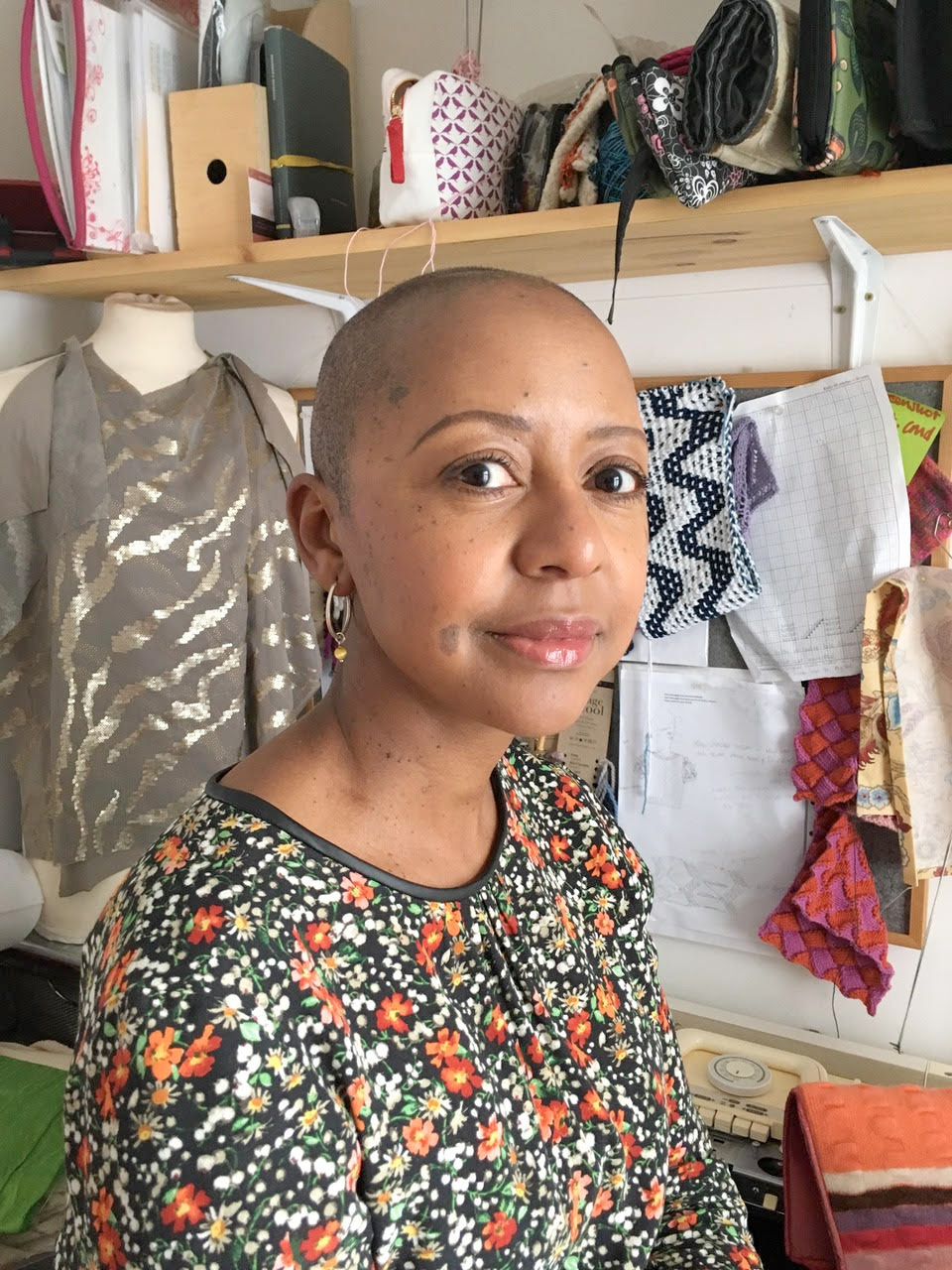By Jeanette Sloan
If you follow me on Instagram where I’m @jeanettesloan, you’ll know I’ve worked as a black knitwear designer for over 20 years. In all that time, I was never aware of many other BIPOC working in knitting so in 2018 I began to question why the world of fibre crafts appeared to be a BIPOC free zone. And I wasn’t alone in noticing this.

Jeanette Sloan
Over the last 12 months, many in the fibre community have had to step out of their comfort zone to address issues such as lack of diversity, representation and, the elephant in the room: racism. As individuals, it’s never easy to discuss things that make us feel uncomfortable; it’s much easier to let the lure of yarn tempt us back to our happy place so we can carry on with our craft of choice, whether that’s knitting or crochet.
Diversity is a tricky word. Why? Because it means different things to different people and it can often be a way for companies to engage in a bland, box ticking exercise. But if we think in terms of who is missing from the room, then it has more meaning. In order for us not to revert back to ‘business as usual,’ we need to be aware of who’s not represented, look for whose work isn’t seen and take steps to ensure that they’re included.
It’s certainly a positive thing to see issues of diversity and inclusion being openly discussed at an increasing number of fibre events. But sometimes I worry that ‘The D word’ is used by organisations as a means to deflect criticism when one of their events or publications - through lack of inclusion - continues to perpetuate the myth that BIPOC don’t knit/crochet/weave/spin/etc. Using it shouldn’t be a get out of jail free card. Speaking about diversity has to be followed up with positive, mindful action. And, as a fibre community, we should be looking to include the voices of those whose work for far too long has previously been overlooked by events and publications. The main focus should be engaging with them and lifting up their work. It’s one of the reasons I agreed to become involved with the Diversity Advisory Council and why I set up BIPOC in Fiber.

Diversity Advisory Council Members, from top l-r to bottom l-r: Louis Boria, Brooklyn Boy Knits; Ana Campos, Circle of Stitches; Felicity (Felix) Ford, KNITSONIK; Lorna Hamilton Brown; Diane Ivey, Lady Dye Yarns; Cecilia Nelson-Hurt; Jeanette Sloan; and Angela Tong.
Soho Publishing, the company behind Vogue Knitting magazine and the Vogue Knitting Live! events, was one of a number of companies criticised for its lack of diversity, but they listened to their critics and chose to take action by setting up the DAC. Being the first of its kind in the knitting community, the council brings together eight people from a diverse range of ethnicities, but within that we also come from different backgrounds with regards to craft discipline, industry experience, socioeconomics, age, gender, sexuality and physical ability. BIPOC in Fiber grew out of the POC Designer & Crafters List I compiled after writing the article Black People Do Knit.

BIPOC in Fiber logo
When I started the POC list, it was a practical way to raise the profiles of BIPOC makers working in the fibre industry and it became an essential resource that helped to influence how major fibre events are curated. But feeling that it could do more as BIPOC in Fiber - a project that’s BIPOC led and centred, working with trusted allies - a Crowdfunding campaign was launched. We raised funds to expand the capacity and capability of the POC Designers & Crafters List into an interactive online resource portal and the response was overwhelming, which showed how receptive people are to change that is about action as much as it is about words.
I’m hopeful that this and other collaborations I’ve seen develop over the last 12 months are signalling a real change, but that change doesn’t happen overnight. It means each and every one of us doing our bit.
